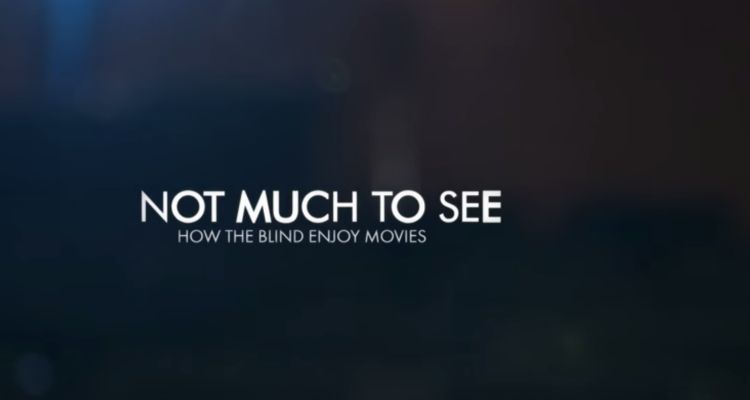Watching Blind: Seeing Movies in a Whole New Way

Derrek is a film enthusiast from Buffalo, NY. When he's…
In today’s age of digital and IMAX cameras and big-budget post-production in film, no one would argue that cinema is very much a visual experience. Movies are, by definition, the recording of images to tell a story. But for those that are unable to see, whether they are born that way or became blind later in their lives, films can still be entertaining and immersive.
Over at YouTube on the Academy Originals channel, they have put together a small video highlighting the experience and technology that goes in to making a movie more accessible to those that are visually impaired. It’s something interesting for any film fan to watch, to try and understand how someone who can’t see can truly enjoy an art that is visual by nature.
The looks on their faces says it all. From Aladdin taking Princess Jasmine on the carpet ride to Gollum obsessing over his precious ring, nothing is lost in translation for these film fans. To hear that one gentleman had watched The Matrix a couple times to no effect, but was able to experience the movie with the descriptive audio warms your heart. I’ve loved movies since I was a child and the visual aspect has always been key but we sometimes take for granted the affect that music and sound (or the lack thereof) can have.
We get caught up in marketing or star-power and we forget to really take in the dialogue, the pauses in-between, and the ambient noise of the shot. When The Grey was mentioned, he discussed the sound of wind moving from speaker to speaker. This is an effect that’s been used in audio recordings since at least the 70’s but for this person, it created a visual effect, a sense of being out in the cold with the wind whipping across your face. It engages the mind in a way that is greatly under-appreciated when you can see the images associated with the sound.
The only reason I knew something like this existed was because I had rented a movie with the Descriptive Video Service recording by accident. I was only 11 or 12 but as I lay there falling asleep, listening to Dick Tracy round up the thugs in the city, I could see the scenes in my head, described in just the right details, painting a picture that almost perfectly matched what I was able to see.
Film is an art that should be enjoyed by everyone. If you are a cinephile like the rest of us, think about these aspects to enhance your experience. Don’t just view the movie, surround yourself with it. Listen to the score, breathe in the dialogue, soak up the background noises of the scene. Appreciate the visuals we have but remember that there is much more than a moving image on screen.
Has anyone else, visually impaired or not, seen a movie with the audio description? Did you ever think of movies as being accessible for the blind? Do you think you’d still enjoy your favorite movie if you were unable to see it?
Let us know in the comments and check out some of the other videos on the Academy Originals YouTube channel.
Does content like this matter to you?
Become a Member and support film journalism. Unlock access to all of Film Inquiry`s great articles. Join a community of like-minded readers who are passionate about cinema - get access to our private members Network, give back to independent filmmakers, and more.
Derrek is a film enthusiast from Buffalo, NY. When he's not busy fighting crime or rescuing kittens, he works as a designer for an automotive manufacturer. His favorite way to unwind after a long week is with a new movie or an old favorite. From Alice in Wonderland to The Avengers, from Zorro to Zoolander, let's talk film.













